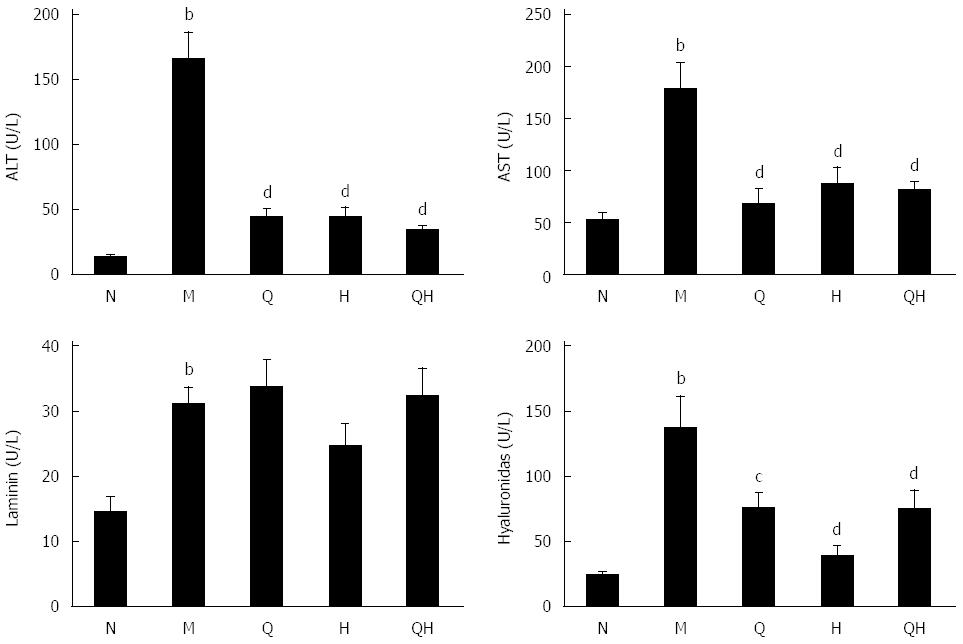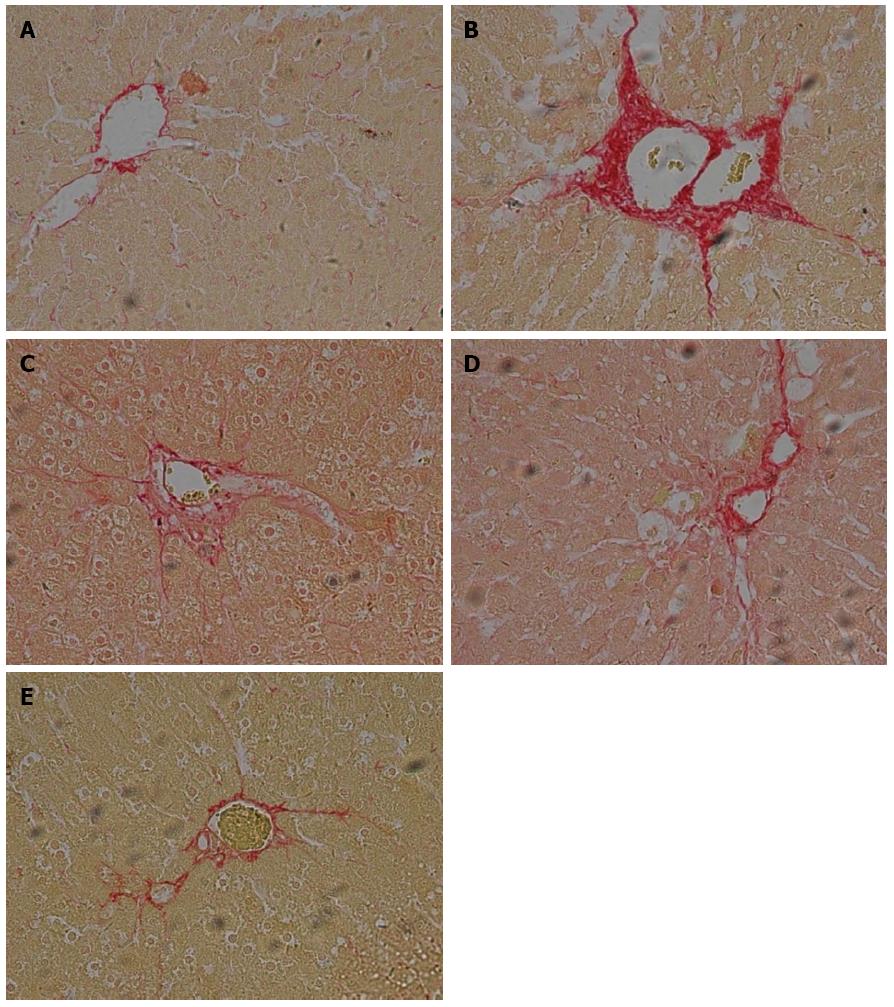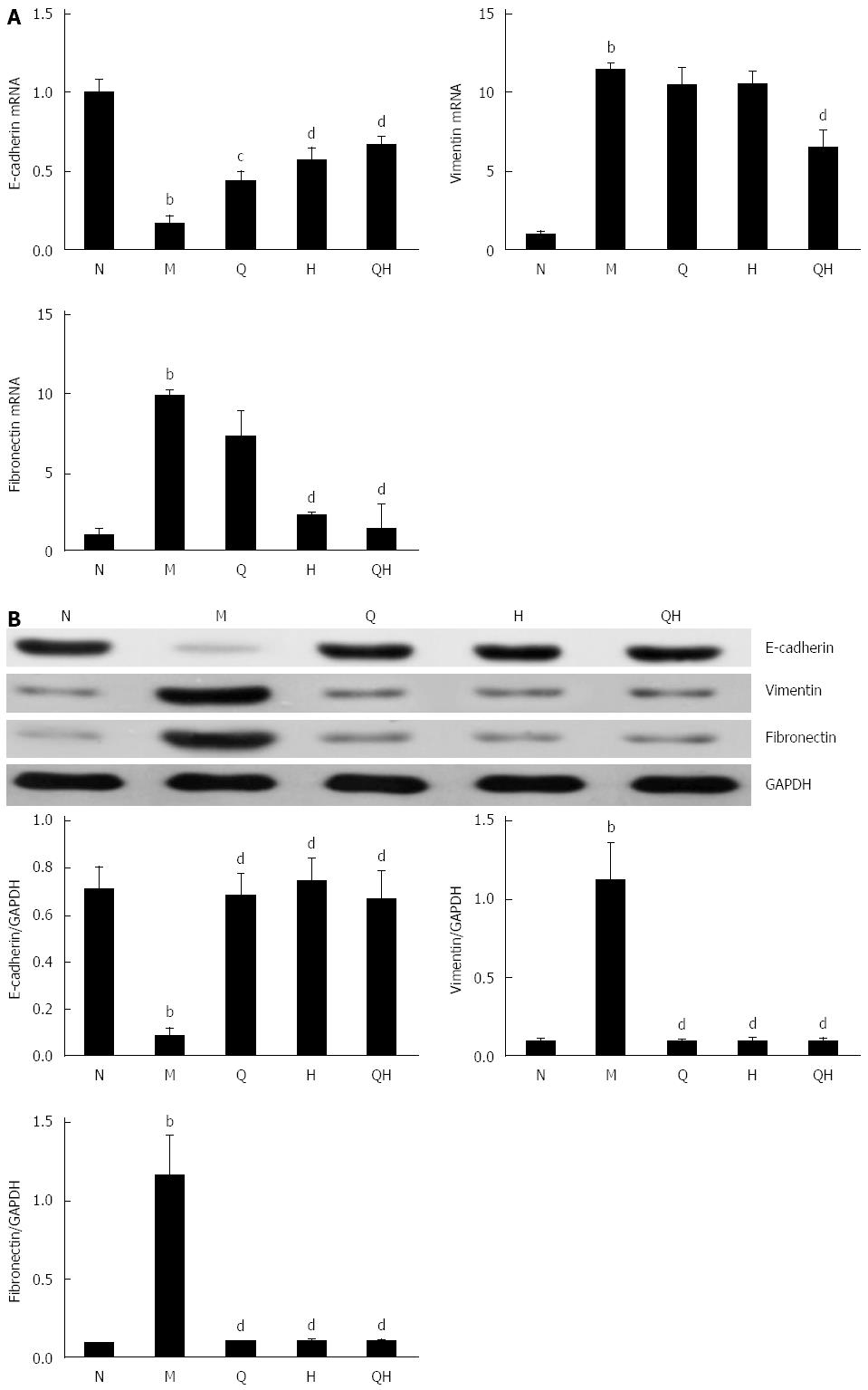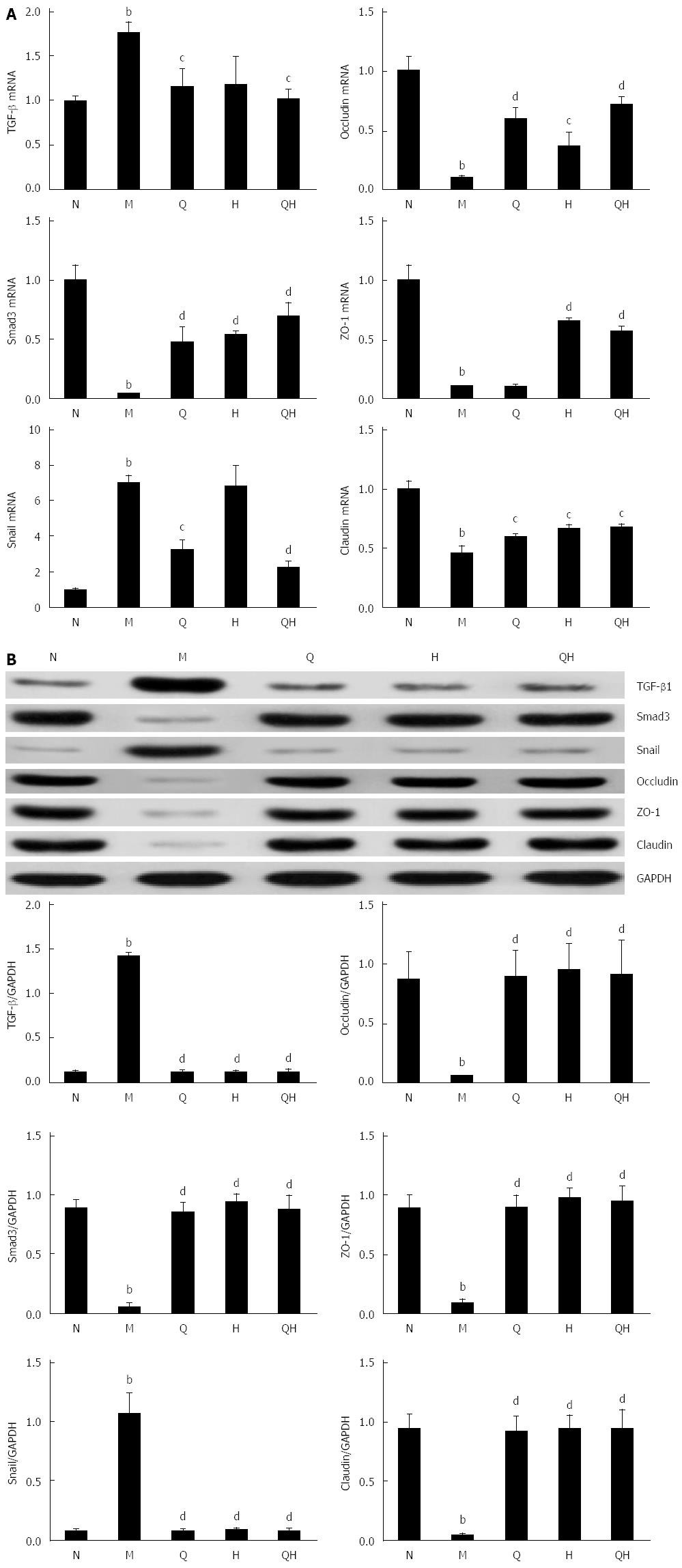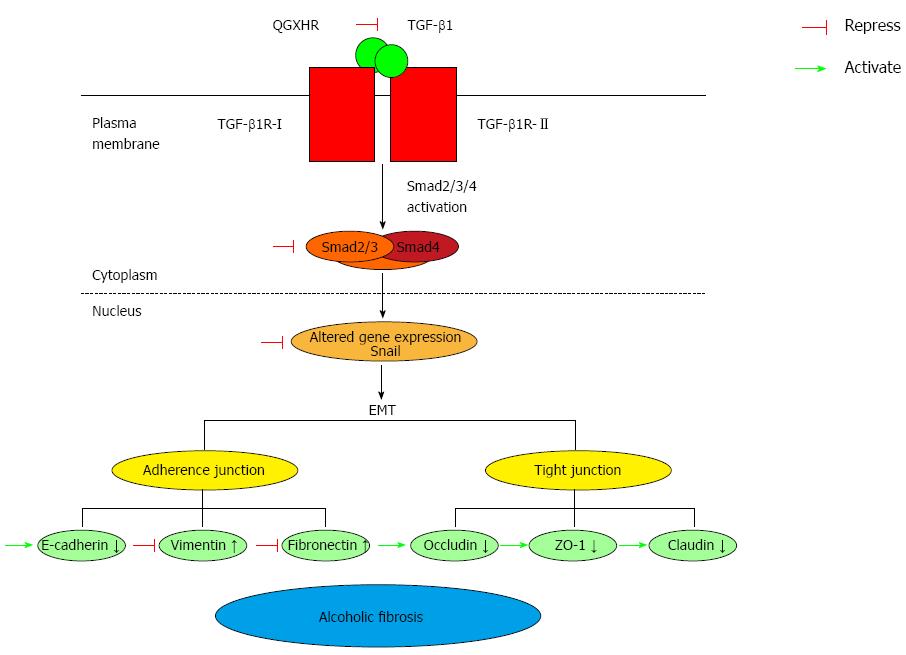Copyright
©The Author(s) 2016.
World J Gastroenterol. May 21, 2016; 22(19): 4695-4706
Published online May 21, 2016. doi: 10.3748/wjg.v22.i19.4695
Published online May 21, 2016. doi: 10.3748/wjg.v22.i19.4695
Figure 1 Qinggan Huoxue recipe ameliorates liver injury associated with alcoholic liver fibrosis with respect to alanine transaminase, aspartate transaminase, laminin and hyaluronidase levels.
aP < 0.05, bP < 0.01 vs Normal healthy control group; cP < 0.05, dP < 0.01 vs Model ALF group. N: Normal healthy control group; M: Model ALF group; Q: Qinggan Recipe group; H: Huoxue Recipe group; QH: Qinggan Huoxue Recipe group.
Figure 2 Changes in liver histopathology detected by hematoxylin and eosin staining and light microscopy (× 200 magnification).
A: Normal healthy control group; B: Model ALF group; C: Qinggan Recipe group; D: Huoxue Recipe group; E: Qinggan Huoxue Recipe group. ALF: Alcoholic liver fibrosis.
Figure 3 Changes in liver histopathology observed by Sirius Red staining and light microscopy (× 200 magnification).
A: Normal healthy control group; B: Model ALF group; C: Qinggan Recipe group; D: Huoxue Recipe group; E: Qinggan Huoxue Recipe group.ALF: Alcoholic liver fibrosis.
Figure 4 Qinggan Huoxue Recipe-induced expression of epithelial-to-mesenchymal transition-associated factors.
A: E-cadherin, vimentin and fibronectin mRNA expression evaluated by RT-PCR; B: E-cadherin, vimentin and fibronectin protein expression evaluated by Western blot. aP < 0.05, bP < 0.01 vs Normal healthy control group; cP < 0.05, dP < 0.01 vs Model ALF group. N: Normal healthy control group; M: Model ALF group; Q: Qinggan Recipe group; H: Huoxue Recipe group; QH: Qinggan Huoxue Recipe group.
Figure 5 Qinggan Huoxue Recipe suppresses epithelial-to-mesenchymal transition by inhibiting the Smad signaling pathway.
A: TGF-β1, Smad3 and Snail mRNA expression evaluated by RT-PCR; B: TGF-β1, Smad3 and Snail protein expression evaluated by Western blot. aP < 0.05 and bP < 0.01 vs Normal healthy control group; cP < 0.05 and dP < 0.01 vs Model ALF group. N: Normal healthy control group; M: Model ALF group; Q: Qinggan Recipe group; H: Huoxue Recipe group; QH: Qinggan Huoxue Recipe group.
Figure 6 Potential mechanism underlying Qinggan Huoxue Recipe-mediated inhibition of epithelial-to-mesenchymal transition in alcoholic liver fibrosis rats.
TGF-β1 stimulates responsive cells through binding and activating the transmembrane receptors TGF-β type I (TGF-βR-I) and type II (TGF-βR-II). Receptor ternary complexes phosphorylate and activate Smad2/3. Once activated, Smad2/3 forms heterocomplexes with Smad4, and these translocate to the nucleus and activate TGF-β1 signaling. Snail, a gene associated with the TGF-β/Smad signaling pathway, inhibits E-cadherin expression, increases vimentin and fibronectin levels, promotes EMT and decreases the levels of occludin, ZO-1 and claudin. QGR, HXR and QGHXR suppressed the effects of ALF-induced modulation of the TGF-β/Smad signaling pathway and ameliorated EMT-induced alcoholic fibrosis. QGR, HXR and QGHXR affected molecules associated with the TGF-β/Smad signaling pathway in the same manner. However, QGR and HXR exerted no significant changes in vimentin mRNA expression, QGR exerted no significant changes in fibronectin mRNA expression, and HXR exerted no significant changes in Snail and TGF-β1 mRNA expression.
- Citation: Wu T, Chen JM, Xiao TG, Shu XB, Xu HC, Yang LL, Xing LJ, Zheng PY, Ji G. Qinggan Huoxue Recipe suppresses epithelial-to-mesenchymal transition in alcoholic liver fibrosis through TGF-β1/Smad signaling pathway. World J Gastroenterol 2016; 22(19): 4695-4706
- URL: https://www.wjgnet.com/1007-9327/full/v22/i19/4695.htm
- DOI: https://dx.doi.org/10.3748/wjg.v22.i19.4695









